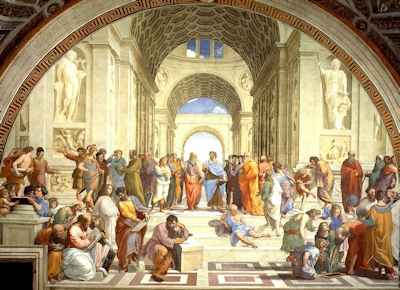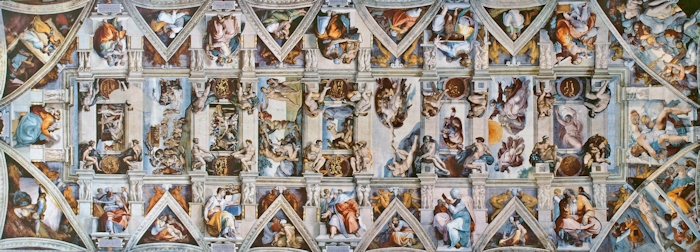|
John's Blog
Sunday, March 06 2016
This is a continuation of the blog I posted last week. I realized there was just way too much going on around the time Leonardo painted the “Mona Lisa” to not expand on that time period. So here is a bit more: It was in the year 1504 that Michelangelo completed his marble statue of , “David.” The statue stands 17 feet tall. The marble block from which it was carved had a long history of not being worked on, but finally the contract was given to Michelangelo who worked on it for two years. It was in 1505 that Michelangelo was summoned to Rome by Pope Julius II. This started a relationship that lasted 40 years. In1508 he started working on the Sistine Chapel which took four years to complete. He painted it standing up not lying down as some stories tell. It is a fairly well documented fact, Michelangelo and Leonardo didn’t get along. They were completely different types. The fist was a stone mason first who worked long hours alone, and didn’t have many social skills. Leonardo, on the other hand, enjoyed the finer things in life, and even though he was always working and experimenting, he did use his talents to further his position in various courts. The third of what is sometimes called the “Great Trinity” of artists from the High Renaissance period is Raphael. (1483-1520). Even though he died at a young age he left a large body of work, probably because he ran and very large workshop. His masterpiece or best known work is his, “School of Athens” painted between 1509 and 1511. It was painted for the Apostolic Palace in the Vatican. It portrays Philosophy. It is said to portray all the great philosophers from antiquity. However, there is no real way of telling who is who. The only ones known for certain are at the center. They are Aristotle and Plato. There have been many speculations as to the meaning of the positioning and posing of these figures.
Raphael, School of Athens
Michelangelo, Sistine Chapel. Some other things around this time: 1487 - In Mexico the great temple in the Aztec city of Tenochtitlan was dedicated. A ceremony that may have lasted from 4 to 20 days it is speculated as many as 20,000 people were ritually executed by having their hearts sliced from their bodies. From about 1496 until the middle of the 16th century approximately one million people contracted what was called the “French Pox” because it was first seen in French troops stationed in Italy. The disease was actually syphilis. It was most likely brought to Europe by sailors returning from the New World. In literature, Niccolo Machiavelli wrote “The Prince” in 1513. This work has become famous as what some call the first work of modern political philosophy. The essence of his writings is in very simplistic words, “Any methods, no matter how immoral or untruthful, justify the end of winning the post desired.” Playing to the ignorance and fears of the public is a quicker route to success than taking any moral high ground. These writings might be something important to think about during modern elections. 1492 was also the year the Spanish took over Granada in Southern Spain. This ended the near 800 year occupation of Islamic Moorish rule in the Iberian Peninsula. During the Moor’s rule of the city of Granada was famous for its intellectualism and religious tolerance with Arabs, Berbers, Christians and Jews living in separate quarters. With the conquest of the city by Ferdinand and Isabella’s troops this ended. What started was the beginning of the Christian persecution of heretics, namely Muslim and Jews, which became known as the Inquisition. In 1517 the Ottoman Empire was fully established and then controlled the Middle East and Egypt. This gave them control over the “spice route” which was in conflict with the Portuguese. About this time the Portuguese fleet arrived in China with the idea of opening up trade routes. However the Chinese considered the Europeans uncouth barbarians so not much came of the encounters. I think that is enough for today. I’ll be posting more next week about this time. Maybe next week we will look at some of what is known as Byzantine art. When, what, why, how. |
Site Mailing List
Sign Guest Book
View Guest Book
The portraits, paintings, prints and art classes of John Entrekin
John Earl Entrekin
Site designed and managed by Midair-maintence. All content is copyrighted by John Earl Entrekin, 2011
Build your own website
WebStudio Website Builder
WebStudio Website Builder








